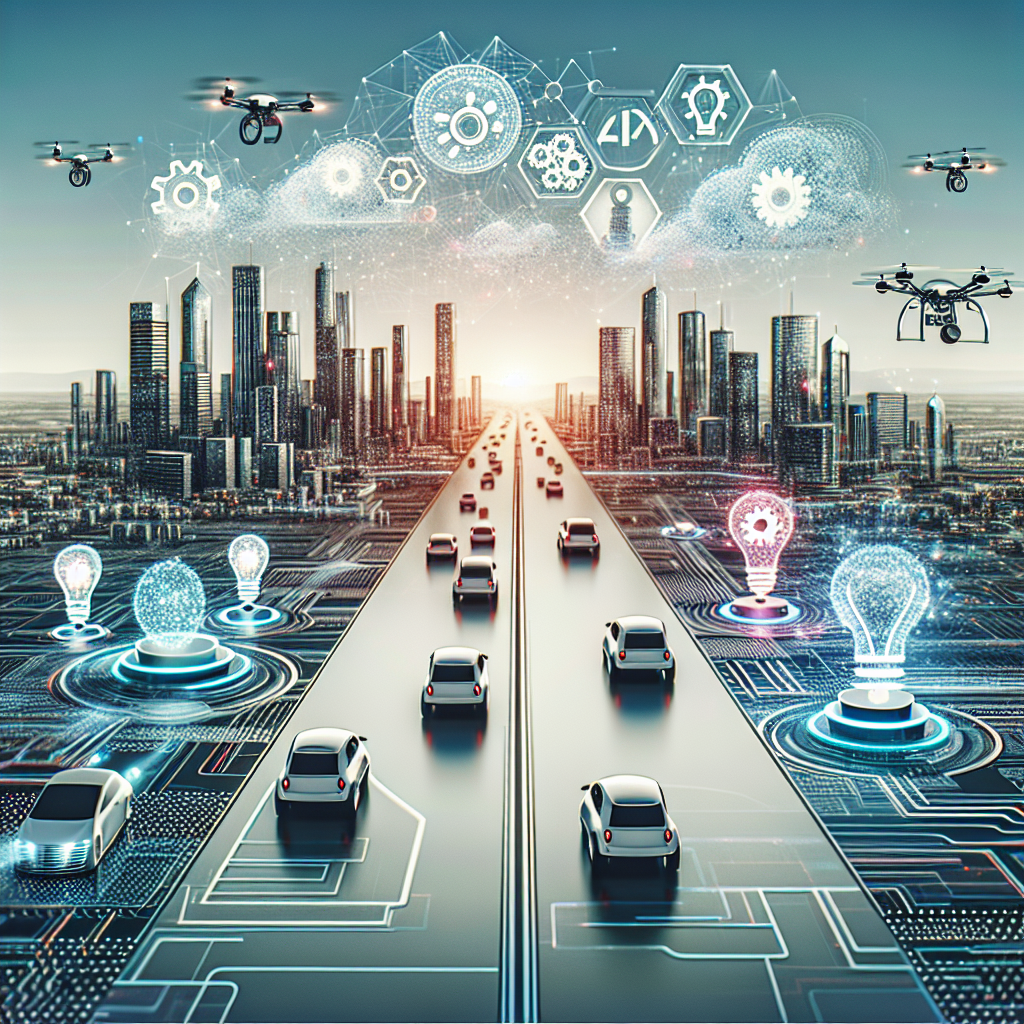The Future of Transportation: AI-Driven Solutions for Autonomous Vehicles
In recent years, the transportation industry has been rapidly evolving with the introduction of autonomous vehicles. These vehicles, equipped with advanced artificial intelligence (AI) technology, are poised to revolutionize the way we travel and commute. As we look to the future of transportation, it is clear that AI-driven solutions will play a significant role in shaping the way we move from place to place.
Autonomous vehicles are vehicles that can operate without human intervention. They are equipped with sensors, cameras, and other technologies that allow them to navigate roads, avoid obstacles, and make decisions in real-time. AI is at the core of this technology, enabling autonomous vehicles to learn from their surroundings, adapt to changing conditions, and make split-second decisions that ensure safety and efficiency.
One of the key advantages of autonomous vehicles is their potential to reduce accidents and fatalities on the road. According to the World Health Organization, road traffic accidents are one of the leading causes of death globally, with over 1.35 million people dying each year. Autonomous vehicles have the potential to significantly reduce these numbers by eliminating human error, which is a major factor in the majority of accidents.
In addition to safety benefits, autonomous vehicles also offer a range of other advantages. They have the potential to reduce traffic congestion, improve fuel efficiency, and provide greater mobility for elderly and disabled individuals. With the rise of ride-sharing services and the shift towards electric vehicles, autonomous vehicles are poised to play a key role in the future of transportation.
AI-driven solutions are at the forefront of this revolution, enabling autonomous vehicles to navigate complex environments, communicate with other vehicles, and make decisions in real-time. These solutions are powered by machine learning algorithms that allow vehicles to learn from their experiences and improve their performance over time.
One of the key challenges facing the development of autonomous vehicles is the need for robust AI systems that can handle the complexity and uncertainty of real-world driving conditions. AI-driven solutions must be able to process large amounts of data, make quick decisions, and adapt to changing environments in order to ensure the safety and reliability of autonomous vehicles.
To address these challenges, researchers and engineers are developing advanced AI algorithms that can handle a wide range of scenarios, from navigating busy city streets to dealing with adverse weather conditions. These algorithms are trained using vast amounts of data collected from real-world driving scenarios, allowing autonomous vehicles to learn from experience and continuously improve their performance.
In addition to AI-driven solutions, autonomous vehicles also rely on a range of other technologies, such as LiDAR sensors, GPS systems, and communication networks. These technologies work together to provide a comprehensive view of the vehicle’s surroundings, enabling it to make informed decisions and navigate safely through complex environments.
As autonomous vehicles continue to evolve, we can expect to see a wide range of applications across various industries. From delivery drones to self-driving taxis, autonomous vehicles have the potential to transform the way we move goods and people from place to place. In the coming years, we can expect to see a shift towards autonomous transportation systems that are safer, more efficient, and more environmentally friendly.
FAQs
Q: How do autonomous vehicles work?
A: Autonomous vehicles rely on a range of technologies, including AI-driven solutions, sensors, cameras, and communication networks. These technologies work together to provide the vehicle with a comprehensive view of its surroundings, enabling it to navigate roads, avoid obstacles, and make decisions in real-time.
Q: Are autonomous vehicles safe?
A: Autonomous vehicles have the potential to be safer than human drivers, as they eliminate the risk of human error, which is a major factor in the majority of accidents. However, there are still challenges to overcome, such as ensuring the reliability and robustness of AI-driven systems in complex driving conditions.
Q: What are the benefits of autonomous vehicles?
A: Autonomous vehicles offer a range of benefits, including improved safety, reduced traffic congestion, and greater mobility for elderly and disabled individuals. They also have the potential to reduce fuel consumption and emissions, as they can be programmed to drive more efficiently than human drivers.
Q: When will autonomous vehicles be available to the public?
A: Autonomous vehicles are already being tested on roads in various locations around the world, but widespread adoption is still several years away. Regulatory hurdles, technological challenges, and public acceptance are all factors that will influence the timeline for the deployment of autonomous vehicles.
Q: What are the key challenges facing the development of autonomous vehicles?
A: Some of the key challenges facing the development of autonomous vehicles include ensuring the reliability and robustness of AI-driven systems, addressing regulatory and legal issues, and ensuring the cybersecurity of autonomous vehicles. Researchers and engineers are actively working to overcome these challenges and bring autonomous vehicles to the market.
In conclusion, the future of transportation is set to be revolutionized by AI-driven solutions for autonomous vehicles. These vehicles have the potential to transform the way we travel and commute, offering a range of benefits such as improved safety, reduced traffic congestion, and greater mobility for all. As researchers and engineers continue to advance the technology behind autonomous vehicles, we can expect to see a shift towards a more efficient, sustainable, and connected transportation system.

